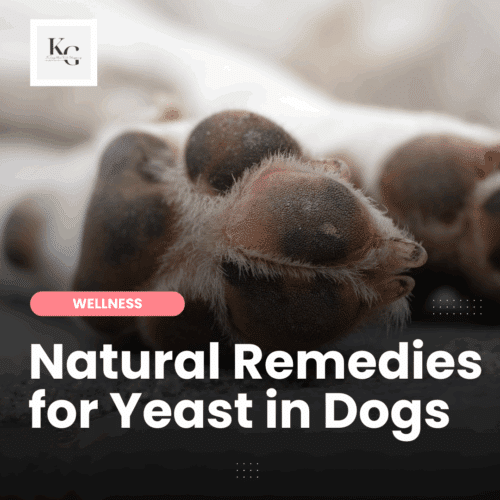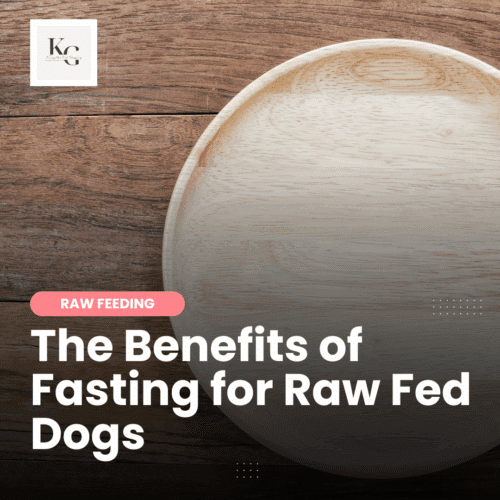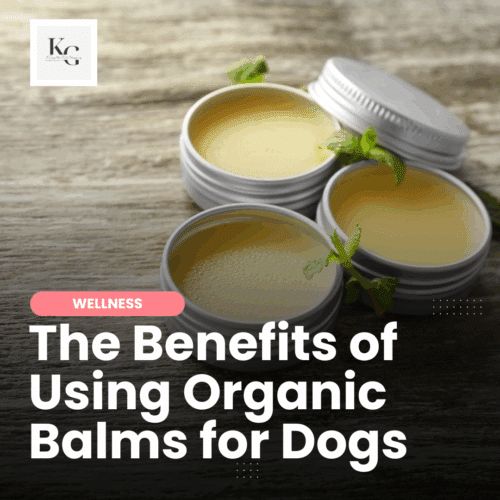Keep the Tail Wagging is supported by pet parents. I occasionally earn a commission (at no additional cost to you) when you click through an affiliate link to one of my favorite products. Thank you for your support. Read More
Although I believe raw dog food is the best diet for my dogs, I also understand not all dog owners can feed raw, and the diet isn't a good fit for all dogs. So, when I get a question about kibble, I answer to the best of my knowledge. I don't shame people, and I don't try to convert them to raw. Instead, I share ways to make a kibble diet healthier. I'm convinced when someone begins to see the benefits of fresh food, even a small positive change, they'll continue making improvements to their dog's diet. I like to meet people where they are, and in this article, I'm sharing 15 ways you can make a kibble diet healthier for your dog.
Why I Don't Hate Kibble Dog Food
The reality is that most dog owners in America feed dry dog food, resulting in billions in revenue for large companies. Just look at the marketing, from grocery stores, outlet stores, warehouse stores, big box pet stores, and online websites – most food available for dog owners is dry and canned dog food. Although raw and cooked foods make up a growing segment in the pet food industry, it doesn't compare to kibble. So, instead of complaining about kibble, I'd rather be realistic because I may find myself shopping for kibble if raw becomes unobtainable.
5 Reasons Kibble May Not Be Ideal for Dogs
I'm sure thousands of dogs are fed a kibble diet without issue; however, the people who contact me are trying to address health problems. Skin issues, obsessive itching, chronic ear infections, difficulty losing weight, hyperactivity and reactivity, gut issues, joint issues at a young age, and more. I've learned that the ingredients in kibble lead to these common health issues in many dogs.
1 – Lack of Moisture: Dry kibble has a much lower moisture content compared to fresh or wet food. This can contribute to dehydration in dogs. According to the American Kennel Club, inadequate moisture intake can potentially lead to urinary tract issues.
2 – Decreased Nutrient Bioavailability: The processing involved in making kibble can degrade the availability and quality of some nutrients. Heat processing methods used in kibble production can diminish the bioavailability of certain vitamins and minerals.
3 – Higher Carbohydrate Content: Many kibble diets have a higher carbohydrate content compared to a dog's natural diet. Dogs primarily need protein and fat, and excessive carbohydrates can potentially lead health issues, including weight gain or contribute to conditions like diabetes.
4 – Potential for Additives and Fillers: Some kibble products may contain additives, fillers, or artificial ingredients. These can include preservatives, flavors, and colorings that may not be suitable for all dogs.
5 -Lack of Variety: Feeding a solely kibble-based diet may limit the variety of textures, flavors, and nutrients a dog receives. Eating the same type of food every day may lead to monotony and potential nutrient deficiencies.
The good news is that each of these points can be offset affordably with fresh food and I'll explain how.
15 Ways to Make a Kibble Diet Healthier for Dogs
If you're here because you feed a kibble diet and you'd like to make it healthier for your dog, here is a list of 15 ways you can accomplish this without breaking the bank.
1 – Feed a Quality Kibble – this is will be different for everyone. Stop by your local independent pet store (not the big box chain pet stores) and speak with the manager about kibble. They will be able to make recommendations based on your dog's needs and your budget.
2 – Add Bone Broth – you can add moisture by making bone broth (recipe). Bone broth is rich in nutrients like collagen, amino acids, and minerals, which support joint health, gut health, and immune function. It promotes healthy skin, aid in digestion, and provide a source of hydration. Its potential benefits include supporting overall well-being and providing a nourishing addition to a dog's diet.
You can purchase bones from your local butcher, the grocery store or ethnic market, and local homesteaders and hunters.
3 – Add Raw Goat's Milk or Kefir – raw goat's milk or kefir offer benefits such as probiotics that promote gut health and boost digestion, offer additional vitamins and minerals for overall nutrition, and enzymes that aid in nutrient absorption. They support a healthy immune system, improve digestion, and offer a source of hydration and nourishment.
I buy raw goat's milk from a local farm, but you can also find it at local independent pet stores and whole food grocery stores.
4 – Add a Vegetables (cooked or pureed) – vegetables add antioxidants for the immune system, moisture, natural nutrients, and fiber to the diet. They support a healthy gut microbiome, may prevent disease, and help dogs maintain a healthy weight. I recommend organic vegetables when possible. I grow a garden with a variety of vegetables each year. If you have a small space, you can have a container or vertical garden that grows all the vegetables and fruits your dog loves.
The vegetables I feed my dogs are: broccoli, collard greens, green beans, cabbage, zucchini, yellow squash, okrah, and asparagus. I either puree them, creating a vegetable mix, or I lightly cook the vegetables for my dogs. I don't feed spinach because it's a high-oxolate food that can lead to urinary or kidney stones. I also grow raspberries, blueberries, and strawberries.
5 – Wild Caught Canned Salmon – salmon is high in Omega-3 fatty acids, which offsets the high Omega-6 balance in kibble. Salmon also supports gut health, the immune system, reduces inflammation, supports joint health, skin and coat health, cognitive health, cardiac health, and more. I buy canned salmon from a local outlet grocery store, stocking up when it goes on sale.
6 – Canned Sardines in Water (no salt added) – like the salmon above, sardines are high in Omega-3 fatty acids and offer many of the same benefits as salmon. Plus, sardines are more affordable. I've found the best prices at outlet grocery stores, stocking up whenever available.
7 – Canned Sardines in Tomato Sauce (not the spicy kind) – although tomatoes are tangentially related to nightshade vegetables, ripe tomatoes are high in lycopene, an antioxidant that reduces inflammation and supports vision health. I stock up on the California Girl brand, splitting the larger can between three large dogs two to three times a month.
8 – Canned Mackerel – another fish that's rich in Omega-3 fatty acids. This one is more expensive than sardines, but I've been able to get it at a great price at a local ethnic market. I like to alternate fish in my dogs' diet for variety. Feeding fish several days a week.
9 – Life Line Pet Salmon Oil – if you can't feed fish (or prefer not to), try salmon oil. There are plenty of fish oil options and I choose salmon oil because it offers the most benefits, including Vitamin E. However, I only use one brand, Life Line Pet, because there's less of chance of the oil oxidizing, unlike other brands. You can find a great price on Amazon and save more by creating a recurring order.
10 – Pasture-Raised Chicken Eggs – chicken eggs are a nutrient-packed food, rich in high-quality protein, vitamins, and minerals. They provide essential amino acids for muscle growth and repair, support brain function, and contribute to healthy skin and coat. Eggs also contain antioxidants that promote eye health and choline, essential for brain development and function. You can feed chicken eggs raw or cooked, the benefits don't change much. I feed over easy, and my dogs love them.
11 – Functional Mushrooms – functional or medicinal mushrooms are excellent for the immune system and gut health; they prevent disease and promote overall wellness. My favorite product is the Daily Dawg by Real Mushrooms, which I alternate with products from Earth Buddy Pet, Animal Essentials, and Adored Beast Apothecary.
12 – Mushroom Broth – mushroom broth offers numerous benefits as a low-calorie, nutrient-dense food. It provides an array of vitamins, minerals, and antioxidants that support immune function, promote overall health, and contribute to optimal digestion. Mushroom broth also has anti-inflammatory properties and can be a valuable addition to a dog's diet.
13 – Lean Cuts of Meat – lean cuts of meat, such as chicken breast or lean beef, are excellent sources of high-quality protein that aid in muscle growth, repair, and maintenance. They provide essential amino acids, vitamins, and minerals for overall health. Lean meats also tend to be lower in saturated fat, making them a heart-healthy food choice. I purchase affordable cuts of meat from a local outlet store and ethnic market.
14 – Organ Meat – heart meat, for example, is a nutrient-rich organ meat that offers a spectrum of benefits. It is a great source of high-quality protein, essential amino acids, vitamins, and minerals like iron, zinc, and B vitamins. Heart meat supports heart health, aids in red blood cell production, and promotes optimal energy metabolism. I've found great prices on pork, beef, and chicken heart at local ethic markets.
15 – Gussy's Gut – fermented vegetables are an excellent addition to the diet as they add a natural source of probiotics, which support gut health and the immune system, reduce inflammation, and more. Gussy's Gut is a blend of organic, fermented, freeze-dried whole foods that have healed my dog's leaky gut. You can try a sample bag of Gussy's Gut by using code KTTW – shop here.
Other excellent probiotics include:
- Daily Dawg by Real Mushrooms
- Gut Soothe by Adored Beast Apothecary
- Fido's Flora by Adored Beast Apothecary
- FullBucket Daily Canine Powder
What About the Salt in Canned Fish?
Dogs require sodium in their diet to help maintain cellular functions like fluid balance, acid-base balance, and nerve signal communication. Healthy levels are a minimum of 0.25 grams of salt per 100 grams of food to 1.5 grams of salt per 100 grams of food as the average amount for a healthy adult dog.
- Each of my dogs eats approximately 600 grams of food daily.
- A can of sardines in tomato sauce contains 0.33 grams of salt, which I split between three dogs once or twice a month. That would equal 0.11 to 0.22 grams of salt from the sardines in tomato sauce for each of my dogs.
The salt in canned sardines, salmon, and mackerel is minimal when we look at a dog's nutritional requirements. Of course, the example I share is for a raw diet; I can't speak to the sodium levels in various kibble brands.
If one of my dogs develops liver, kidney, or heart disease, I may make adjustments after discussing with their holistic veterinarian.
What About Rice and Oatmeal?
Because a kibble diet is high in carbs, I don't believe it's a great idea to add additional grains to the diet. However, if you're making a blend of food – vegetables, rice, and fish/meat, for example – I suggest using quality brown rice instead of enriched white rice.
Brown rice and enriched white rice differ in terms of nutritional content and processing. Brown rice is a whole grain that retains its bran and germ layers, which contain fiber, vitamins, minerals, and antioxidants. It offers more fiber, protein, and essential fatty acids compared to enriched white rice.
Enriched white rice, on the other hand, has the bran and germ layers removed, resulting in a loss of certain nutrients. To compensate, it is often fortified with added vitamins and minerals, such as iron and B vitamins. Some people believe white rice is great for the gut microbiome. I disagree – there's are healthier ways to build a healthy gut microbiome.
Cooking Foods to Add to Kibble
You don't need a recipe to add cooked foods for dogs, which allows you to have fun with the variety. If I were to switch to kibble tomorrow, I'd mix up the following in a slow cooker or pressure cooker:
- lean meat (chicken, turkey, beef)
- vegetable (listed above)
- chopped up shiitake, maitake, reishi mushrooms (in the natural section of the grocery store)
- I'd add canned fish (salmon, sardines, mackerel) to the cooked mix (no need to cook the fish twice)
Replace 20% of Kibble with Fresh Food
Replacing 20% of kibble with fresh food is easy. If a dog eats one cup of kibble in a meal, you'll want to remove 20% and replace that with fresh food, which is 16 tablespoons or slightly less than a 1/4 cup.
Feed Healthier Dog Treats
Independent pet stores are known for healthier dog treats, but many are expensive. I save money by making dog treats. You can follow many recipes online, but if you have a dehydrator, you can make homemade recipes daily. The following recipe is insanely easy.
You can also check out Real Dog Box, a subscription service that offers air-dried protein dog treats, chews, and treats+chews monthly boxes. One box is excellent for three of my dogs.






